ILE Baby Crane and Eagle In-the-Field Sessions
Right now, I have five tame baby cranes and two baby eagles here at ILE and nobody to share them with. The timing for a great learning and photo session here has never been better. $300 for two solid hours of detailed photographic instruction from this Sunday through next Sunday. We can fine-tune your date for the best weather. If you are interested in joining me, please get in touch via e-mail.
Galapagos 2023 Opening Filled!
Lake Morton In-the-Field veteran Bob Matyas will be joining the smallest Galapagos 2023 Photo-Cruise of a Lifetime IPT group ever. Why? Two folks signed up for single cabins. This trip is by far the world’s finest photographic cruise of the famed archipelago. I will be returning in August 2024. If you are interested or have questions, please get in touch via e-mail ASAP.
Iceland
My decades-long dream of spending time on Grimsey Island, Iceland, with the puffins — 13 days in this case!, will be realized this coming July. I am doing back-to-back trips as a participant. If anyone would like information on the world’s greatest Iceland/Atlantic Puffin trip this coming July, please contact me via e-mail.
What’s Up?
I stayed in yesterday morning for the first time since I returned from Alaska. I got tons of work done. I finished and distributed Stick Marsh Site Guide e-Mail #6, the March 20, 2023 Update. I contained details on the latest construction project. Similarly, I finished and distributed the SONY Alpha a1 Set-up and Info Notes Group e-Mail F (20 March 2023).
Though I loved the tiny bug, my favorite image from yesterday was #1, the squabbling Black Vultures. Why? Because it is different and shows action.
Today is Tuesday 21 March 2023. I will surely head down to the lake for a bit once I am done here. This blog post took about two hours to prepare and makes three hundred fifty-five days in a row with a new educational post written just for you. Wherever you are and whatever you are doing, I hope that you too have a great day. My plan is to continue to post every day until the streak reaches one year and one day and then begin posting every other day. I can see the light at the end of the tunnel!
Please remember to use the B&H and Amazon links that are found on most blog pages and to use the BIRDSASART discount code at checkout when purchasing your new gear from Bedfords to get 3% back on your credit card and enjoy free second-day air FedEx. Please, also, consider joining a BAA IPT. You will be amazed at how much you will learn!
You can find some great photo accessories (and necessities, like surf booties!) on Amazon by clicking on the Stuff tab on the orange/yellow menu bar above. On a related note, it would be extremely helpful if blog-folks who, like me, spend too much money on Amazon, would get in the habit of clicking on the Amazon logo link on the right side of each blog post when they shop online. As you might expect, doing so will not cost you a single penny, but would be appreciated tremendously by yours truly. And doing so, works seamlessly with your Amazon Prime account.
Please remember that if an item — a Delkin flash card, or a tripod head — for example, that is available from B&H and/or Bedfords, is also available in the BAA Online Store, it would be great, and greatly appreciated, if you would opt to purchase from us. We will match any price. Please remember also to use my B&H affiliate links or to earn 3% cash back at Bedfords by using the BIRDSASART discount code at checkout for your major gear purchases. Doing either often earns you free guides and/or discounts. And always earns my great appreciation.
The Stick Marsh Site Guide Subscription Service
The Site Guide Subscription Service was a new concept last year. I e-mailed the first issue in late-March 2022. The Basics e-mail includes specific directions to the site, and a map of the rookery area with specific instructions and wind, weather, and where-to-be advice. Sign up now to receive last year’s five e-mails and the latest info in the Stick Marsh Site Guide e-Mail #6: March 20, 2023 Update. To sign up for the Stick Marsh Site Guide Subscription Service, call Jim in the office weekday afternoons at 863-692-0906 with your credit card in hand or send a PayPal for the $100.00 to us at birdsasart@verizon.net. Please be sure to include the words Stick Marsh with your PayPal.
I fully understand that you can go to Google Maps, find Stick Marsh, visit, and likely make some good images. You might think, I can do fine just without artie’s advice. But you will do a whole lot better with it. Especially considering the new conditions and the big change coming very soon.
|
|
|
This image was created on 9 March 2023 by Clemens Van der Werf at Fort DeSoto Park, FL. Kneeling behind his lowered tripod, he used the Canon RF 600mm f/4L IS USM lens with the Canon Extender EF 1.4X III, the Canon Mount Adapter EF-EOS R and the Canon EOS R3 Mirrorless camera body. The exposure was determined via histogram evaluation. ISO 640. 1/2500 sec. at f/5.6 (wide open) in Manual mode. AWB at 7:04:22pm on a sunny afternoon. Image #1: Royal Tern flying low over the water
|
Clemens Van der Werf
As blog regulars know, Clemens is a longtime friend. After attending 13 IPTS in the early 2000-teens, he has been a superb photographer for many years, surely my most accomplished student. Anita North, just back from five months in Africa on her own, is a very close second. I am often envious of Clemens’ (and of Anita’s) work. Clemens’s six images here are all quite excellent. His photos have been featured here on the blog many times. If you would like to see some of those blog posts, type his name into the little white search box at the top right of each blog post and hit Return. That will quickly yield ten pages of links! And, you can see more of his work in his virtual print gallery at Shop.clemensvanderwerf.com. Be especially sure to check out his Bald Eagles Gallery. Equally spectacular are Ice, Penguins, and Yellowstone in Winter. Clemens apparently likes cold weather. He recently moved from West Palm Beach, FL back to The Netherlands. He visited Florida recently.
|
|
|
This image was created on 9 March 2023 by Clemens Van der Werf at Fort DeSoto Park, FL. Kneeling behind his lowered tripod, he used the Canon RF 600mm f/4L IS USM lens with the Canon Mount Adapter EF-EOS R and the Canon EOS R3 Mirrorless camera body.. The exposure was determined via histogram evaluation. ISO 400. 1/3200 sec. at f/5.6 (stopped down one-stop) in Manual mode. AWB at 9:35:36am on a sunny morning. Image #2: Reddish Egret white morph dancing
|
One Day at Fort DeSoto
Clemens made all of today’s featured images in a single day at Fort DeSoto! Consider them and you will have a good understanding of the endless potential of Fort DeSoto and how great it can be in late winter and spring.
|
|
|
This image was created on 9 March 2023 by Clemens Van der Werf at Fort DeSoto Park, FL. Kneeling behind his lowered tripod, he used the Canon RF 600mm f/4L IS USM lens with the Canon Extender EF 1.4X III, the Canon Mount Adapter EF-EOS R and the Canon EOS R3 Mirrorless camera body. The exposure was determined via histogram evaluation. ISO 1600. 1/2000 sec. at f/5.6 (wide open) in Manual mode. AWB at 7:11:11pm on a sunny afternoon. Image #3: Reddish Egret dark morph dancing
|
Underwing Shadows
As with photographs of birds with their wings raised, photographs of dancing egrets with absolutely no sign of a shadow on the underwings are the cream of the crop. Images #3 is a perfect example of this principle. In addition to the great wings-raised pose, there is no sign of an underwing shadow anywhere. A camera that offers 30 fps is a huge advantage in action situations.
|
|
|
This image was created on 9 March 2023 by Clemens Van der Werf at Fort DeSoto Park, FL. Lying on his belly behind his flattened tripod, he used the Canon RF 600mm f/4L IS USM lens with the Canon Extender EF 1.4X III, the Canon Mount Adapter EF-EOS R and the Canon EOS R3 Mirrorless camera body. The exposure was determined via histogram evaluation. ISO 640. 1/2000 sec. at f/5.6 (wide open) in Manual mode. AWB at 8:57:41am on a mostly sunny morning. Image #4: Piping Plover adult pulling worm
|
Have You?
Have you ever before seen an image of a shorebird pulling a worm with both feet off the ground?
|
|
|
This image was created on 9 March 2023 by Clemens Van der Werf at Fort DeSoto Park, FL. Lying on his belly behind his flattened tripod, he used the Canon RF 600mm f/4L IS USM lens with the Canon Extender EF 1.4X III, the Canon Mount Adapter EF-EOS R and the Canon EOS R3 Mirrorless camera body. The exposure was determined via histogram evaluation. ISO 640. 1/2000 sec. at f/5.6 (wide open) in Manual mode. AWB at 8:54:00am on a mostly sunny morning. Image #5: Ruddy Turnstone pulling worm
|
On Working Through the Viewfinder versus Working Off the Rear Monitor
It is always easier to follow a moving subject, frame the subject as you wish thus creating pleasing compositions, and to see the AF points in action when working through the viewfinder as compared to working off the rear screen. You can work through the viewfinder when sitting or kneeling behind your lowered tripod. It is easier to get up from a kneeling position than it is to get up when sitting, but some folks, including and especially me, cannot — for a variety of reasons, all physical, simply cannot kneel. In the same vein, there are some who cannot sit because they cannot get up.
As for getting really low, you have four options:
1-Lie flat on the ground and work with your eye to the viewfinder.
2 While seated, work off the tilted rear screen with the lens on a flattened tripod.
3-While seated, work off the tilted rear screen with the lens on a Panning Ground Pod or skimmer.
4-While seated, work off the tilted rear screen using the ankle-pod, toe-pod, or heel-pod technique.
The first option can be tough on the lower back and neck, and will often leave you wet and muddy from head to toe. But it is much easier to consistently create great low perspective images. Options 2-4 leave you only with a dirty or wet butt. Long sessions can be physically demanded for those not as flexible as they used to be. Be sure to bring your reading glasses when using options 2-4 if you need them.
|
|
|
This image was created on 9 March 2023 by Clemens Van der Werf at Fort DeSoto Park, FL. Lying on his belly behind his flattened tripod, he used the Canon RF 600mm f/4L IS USM lens with the Canon Extender EF 2X III, the Canon Mount Adapter EF-EOS R and the Canon EOS R3 Mirrorless camera body. The exposure was determined via histogram evaluation. ISO 800. 1/2000 sec. at f/8 (wide open) in Manual mode. AWB at 10:05:41am on a mostly sunny morning. Image #6: Black-bellied Plover pulling worm
|
Your Call?
I know that it will be tough, but which of Clemens’ six images do you like best? Please let us know why you made your choice.
Big-time thanks to Clemens for allowing me to share his fine Canon EOS R3 images with you here today.
Unsolicited via e-mail from Pete Myers
I just spent 4 days in the field in a graduate course in bird photography taught by Artie Morris at Fort DeSoto. After almost 50 years of experience pointing cameras at birds from the Arctic to Tierra del Fuego, New Zealand and beyond, I thought I was good enough. But what I learned from Artie in just four days has taken me to a whole new level. As he aptly puts it, “birds as art,” not simply bird photography. One of those 4 days was the most satisfying I’d ever experienced, anywhere. The IPT left me euphoric about what I’d learned, and frighteningly committed to recreating my portfolio with the techniques and insights he taught me.
Unsolicited via e-mail from IPT veteran Eugen Dolan
Arthur, Thank you very much for your overwhelming infectious enthusiasm that helped get me up on some mornings. Also, your ability to express yourself- and explain in great detail why you like or may not like an image – was very helpful in allowing me to better analyze my images. Eugen
Via e-mail from Jim Miller
I can’t stop thinking about how much fun the DeSoto IPT was, and how much I learned. There were so many things that suddenly made perfect sense after I had been confused for so long. Thank you very much for the wonderful trip, and for being a great teacher. As I worked through the raw files last week, I realized what a fantastic lens the 600 IS is. Thanks for the rental! Maybe someday I will be able to afford one. Some images for critique are attached. Thank you again, Artie. It was really wonderful to be with you and learn from you.
Via e-mail from Lee Sommie
I want to thank you for making the Fort DeSoto IPT; it was a fun and educational experience for me. I truly did not want the adventure to end. I now look through the viewfinder with an artist’s mindset. And the real bonus was making new friends with fellow students. Thank you for sharing your knowledge and enthusiasm for wildlife photography. I had a great time with you and look forward to more adventures on future IPTs.
Via e-mail from Muhammad Arif
I had a great time at Fort De Soto. Thank you for all the instruction, for your help and pointers; my photography has already improved tremendously, and I’ve never made such good bird photos before. I wish I could’ve joined you on Monday and Tuesday morning as well, but work got in the way. It was also nice meeting the folks on the IPT. Thanks again for everything and I hope to join you at a future IPT sometime again.
|
|
|
Fort DeSoto in spring is rife with tame birds, many in full breeding plumage. Click on the composite to enjoy a larger version. Clockwise from upper left around to center: Laughing Gull landing on head of Brown Pelican, Laughing Gull in flight, Reddish Egret sunrise silhouette, Great Blue Heron with needlefish, Yellow-crowned Night Heron with ghost crab, Roseate Spoonbill, Sanderling in breeding plumage, and white morph Reddish Egret in glorious breeding plumage. |
The 2023 Spring Fort DeSoto Instructional Photo Tours (IPTs)
Spring Fort DeSoto IPT #1: Tuesday 28 March through the morning session on 31 March 2023. 3 1/2 Days: $1899.00 includes three working brunches. Limit six photographers/Openings: 5.
Spring Fort DeSoto IPT #2: Tuesday 11 April through the morning session on 14 April 2023. 3 1/2 Days: $1899.00 includes three working brunches. Limit six photographers/Openings: 4.
Spring Fort DeSoto IPT #3: Tuesday 9 May through the morning session on 12 May 2023. 3 1/2 Days: $1899.00 includes three working brunches. Limit six photographers/Openings: 5.
Fort DeSoto, located just south of St. Petersburg, FL, is a mecca for terns and gulls, wading birds, and shorebirds in spring. Many of the birds will be in full breeding plumage. Simply put, DeSoto is the new Ding Darling. Migrant shorebirds are in abundance, and many are exceedingly tame. We should have great chances on Royal and Sandwich Terns and both white- and dark-morph Reddish Egrets. Great Egret, Snowy Egret, Great Blue Heron, Tricolored Heron, and White Ibis are easy as well and we will almost surely come up with a tame Yellow-crowned Night-Heron or two along with some American Oystercatchers. We will enjoy lots of great flight photography, especially with the Brown Pelicans.
|
|
|
Again, Fort DeSoto in spring is rife with tame birds, most in breeding plumage. Click on the composite to enjoy a larger version. Clockwise from upper left around to center: Laughing Gull in flight, Yellow-crowned Night-Heron, Sandwich Terns copulating, Roseate Spoonbill, Great Egret with reflection, breeding plumage Short-billed Dowitcher, American Oystercatcher, Royal Tern, white morph Reddish Egret, and Snowy Egret in marsh. |
In Addition!
We should also get to photograph a variety of other shorebirds including Black-bellied, Semipalmated, Wilson’s, Snowy, and Piping Plovers, Willet, Dunlin, Short-billed Dowitcher, Marbled Godwit, and most especially, Red Knot, with many individuals in their handsome breeding plumages. In spring the T-shaped peninsula and the newly formed sandbar, Outback Key, are literally packed with avian treasures.
With just a bit of luck, we may get to photograph one of Florida’s most desirable species: Roseate Spoonbill. And we will surely get to do some Brown Pelican flight photography. With luck, they will have Laughing Gulls landing on their heads. And though not guaranteed, Wood Stork might well be expected. And we will be on the lookout for a migrant passerine fallout in the event of a thunderstorm or two.
|
|
|
Yes, Fort DeSoto in spring is rife with tame birds, most in breeding plumage. Click on the composite to enjoy a larger version. Clockwise from upper left around to center: breeding plumage Dunlin, dark morph Reddish Egret displaying, Laughing Gull vertical front-end portrait, Laughing Gull with prey item, landing on head of Brown Pelican, breeding plumage Royal Tern displaying, Royal Terns — pre-copulatory stance, Laughing Gulls copulating, Laughing Gull head portrait, breeding plumage Sandwich Tern with fish, and a rare treat, a breeding plumage White-rumped Sandpiper. |
What You Will Learn on a DeSoto IPT
- 1- The basics and fine points of digital exposure; how to get the right exposure every time after making a single test exposure (or before if you are using SONY gear).
- 2- How and why to work in Manual mode (even if you’re scared of it).
- 3- How to approach free and wild birds without disturbing them.
- 4- Lots about bird behavior and how to use that knowledge to help you create better images.
- 5- To age and identify many species of shorebirds including various sandpipers, plovers, dowitchers, and possibly yellowlegs.
- 6- To spot good situations and to choose the best perspective.
- 7- To see, evaluate, and understand the light.
- 8- To design pleasing images by mastering your camera’s AF system.
- 9- And perhaps most importantly, to evaluate wind and sky conditions and understand how they affect bird photography.
- 10- More than you could ever imagine.
|
|
|
You got it by now! Fort DeSoto in spring is rife with tame birds, most in breeding plumage. Click on the composite to enjoy a larger version. Clockwise from upper left around to center: Roseate Spoonbill, immature Brown Pelican in flight, the heron/egret hybrid, American Oystercatcher feeding, immature Royal Tern on railing, Great Egret morning silhouette, Black Skimmer in surf, and underside head portrait of Great Blue Heron. |
The Details
Morning sessions will run two and one-half to three hours; afternoon sessions about two. There is never a set schedule on an IPT — we adapt to the conditions. On cloudy mornings with the right wind, we may opt to photograph till noon and skip the afternoon session. That especially when the afternoon weather is looking iffy. We may opt to visit a great North Tampa rookery if conditions warrant that.
There will be a Photoshop/Image Review session before and after brunch (included) each of the three full days. That will be followed by Instructor Nap Time. Each of these IPTs will run with only a single registrant as I do not like disappointing anyone. The best airport is Tampa (TPA). Once you register, you will receive an e-mail with lodging information. Do know that it is always best if IPT folks stay in the same general area (rather than at home or at a friend’s place a good distance away).
Folks attending this IPT will be out in the field as early as possible and stay out late to take advantage of sunrise and sunset colors; this is pretty much a staple on almost all BIRDS AS ART Instructional Photo-Tours. Doing so will often present unique photographic opportunities, opportunities that will be missed by those who need their beauty rest and those who need to get home for a proper dinner. I really love it when I am leaving the beach at 9:30am on a sunny morning after a great session just as a carful or two of well-rested photographers are arriving … We will be getting wet.
Your $599 deposit is due now. Credit cards are OK for that. You can register by calling Jim or Jennifer during weekday business hours at 863-692-0906 with a credit card in hand. Once you leave a deposit, you will receive an e-mail with your balance statement and instructions for sending your balance check three months before the trip begins. If you wish to pay in full right off the bat, you can make your check out to BIRDS AS ART and send it via US mail here: BIRDS AS ART, PO BOX 7245, Indian Lake Estates, FL 33855. You will receive a confirmation e-mail with detailed instructions, and clothing and gear advice two months before the trip. Please shoot me an e-mail if you plan to register or if you have any questions.
IPT veterans and couples or friends signing up together may e-mail for discount information.
Typos
With all blog posts, feel free to e-mail or to leave a comment regarding any typos or errors.

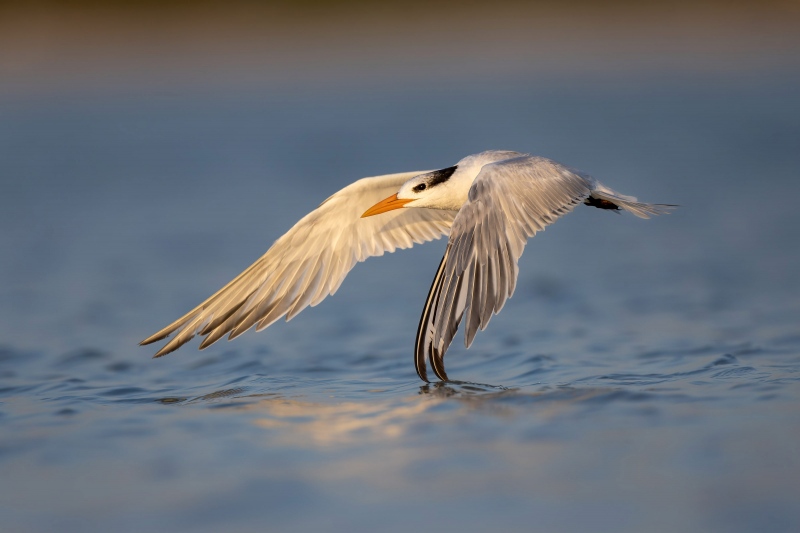
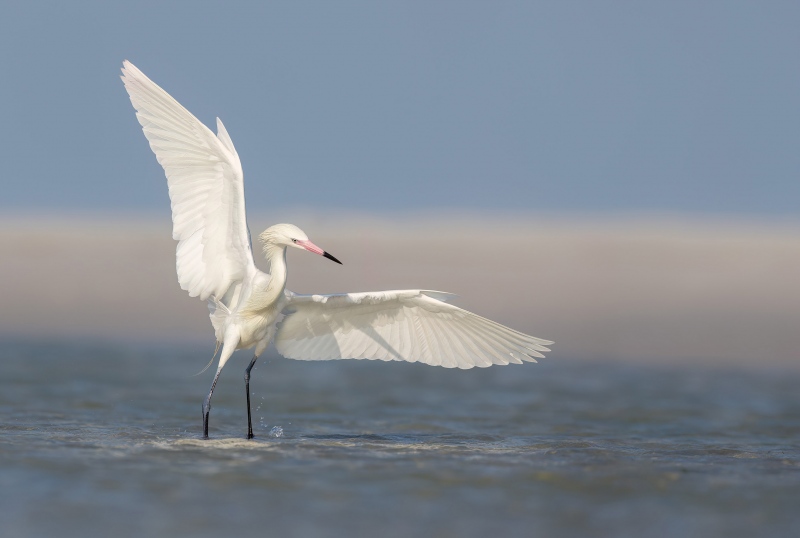
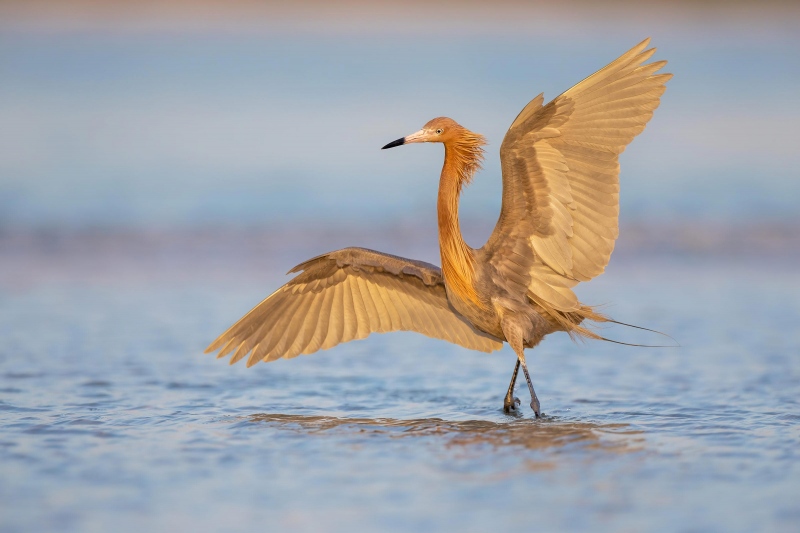
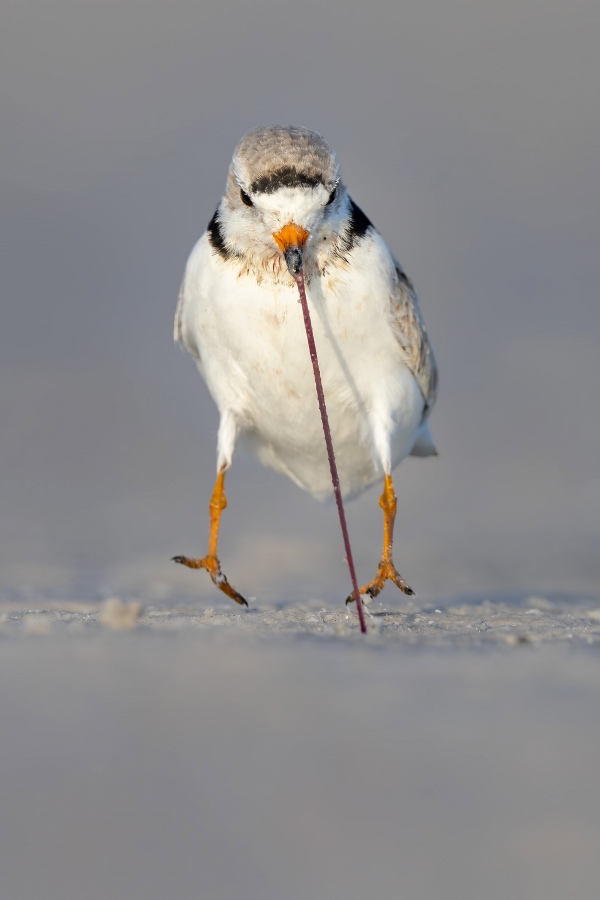
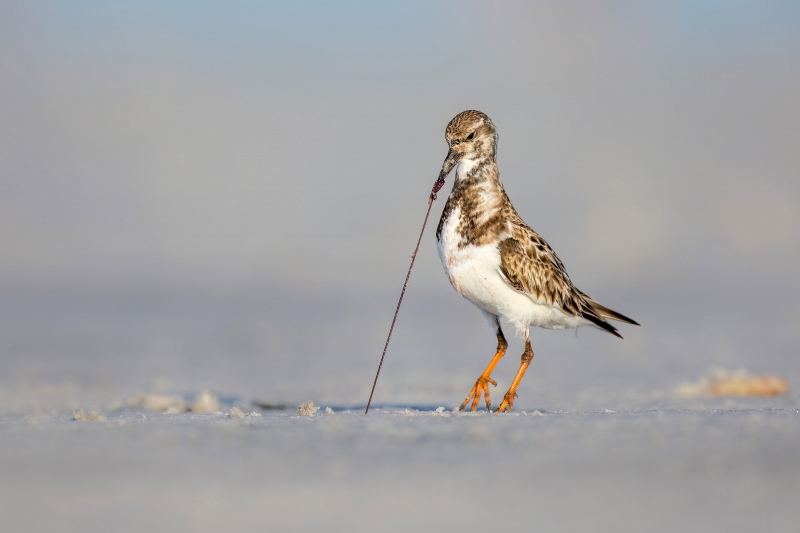
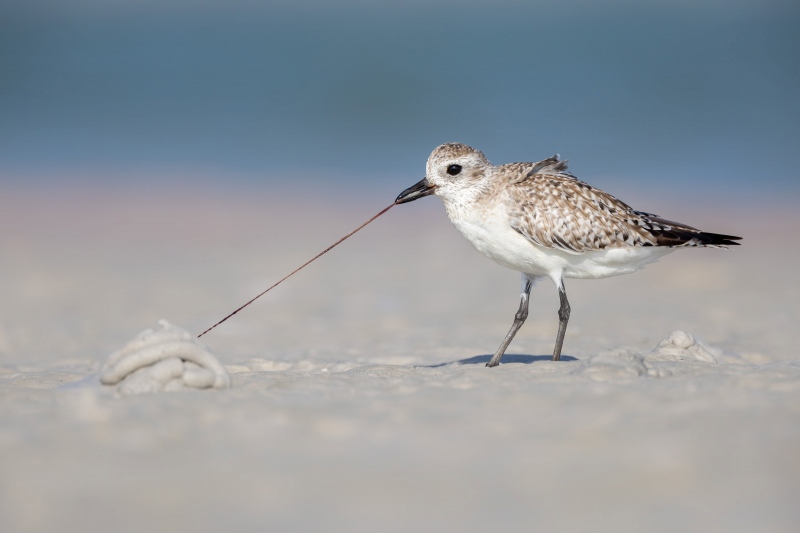
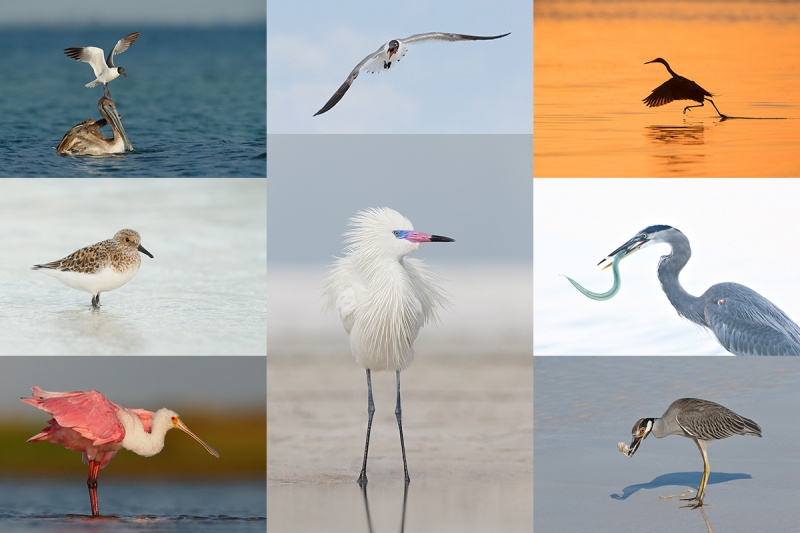
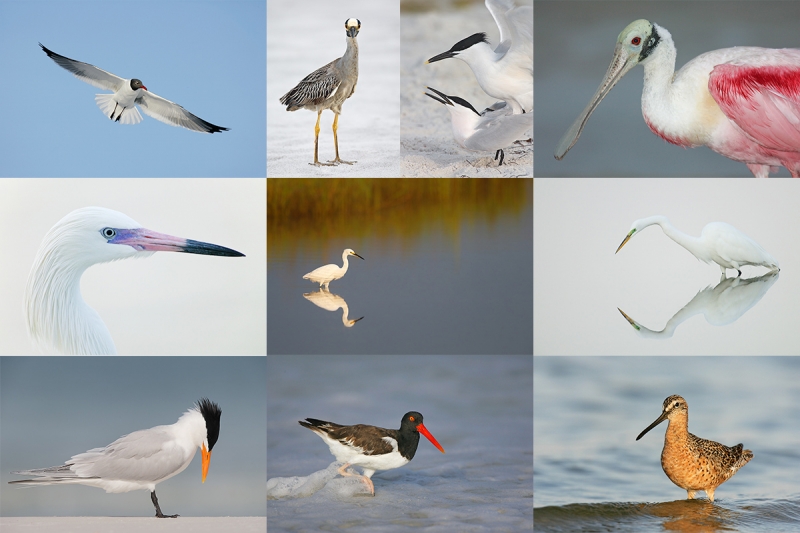
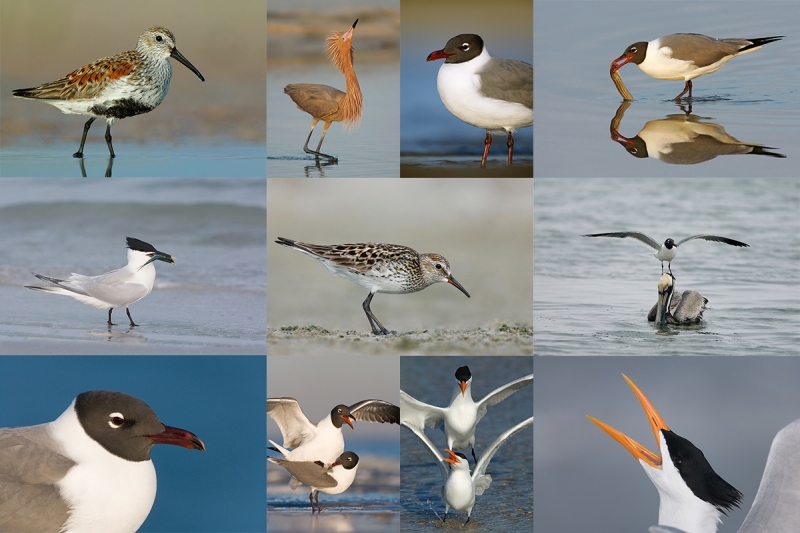
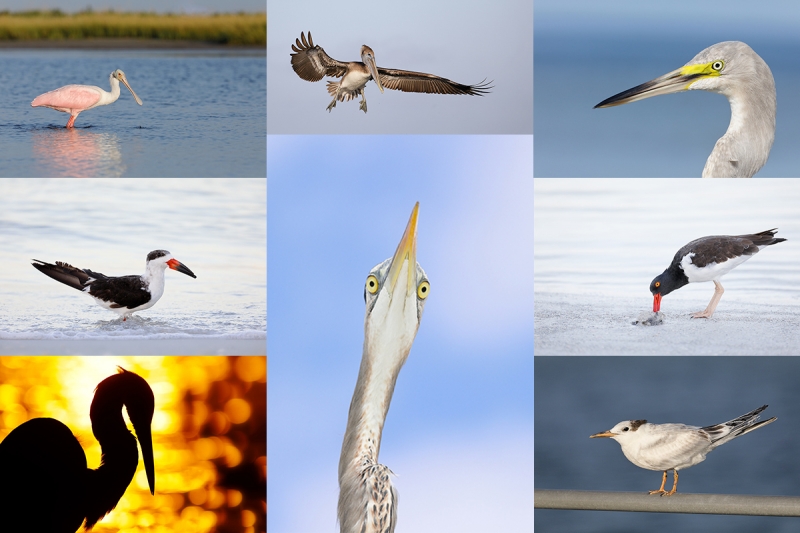













All are awesome! And I might add WHAT A DAY!
BRO
TELL CLEMENS I LOVE ALL HIS PICTURES
LOVE SIS
Thanks everyone for the feedback. Really appreciate it! It is 80% just being there, 15% for execution (not making any mistakes) and 5% luck (a subject that performs when it matters). Those moments when it all comes together are extremely rare, and is what makes you want to come back for more. Happy shooting everyone! Thanks Artie. Clemens
The Piping Plover is Solid Gold
All 6 images are interesting and well made! Images #4 and #5 and #6 of pulling worm have made me laugh about them.
They’re all beautiful and wonderfully executed (if only we Canonites had zebras [sigh]). I can’t pick a single favorite though I think one of the questions referred to whether the 600mm was the EF or RF version? If it was the later he wouldn’t have needed the EF/RF adapter so I think it it must have been the EF version?
My comment seems to have disappeared, or never appeared. Anyway, I agree with Artie that it’s a tough call–all the images are fine–but my favorite is image 2, the white-morph reddish egret dancing. I love the composition, the light, and the pose, and I love the shadow of the bird’s head on the wing.
All of these images are wonderful. It is very hard — no, impossible — to pick a favorite. I am considering #5 over #4 because I prefer the side view of the bird even though #5 is not as clearly above the ground. Both of these images show great tension and movement! The two egrets dancing are fabulous; I think I would pick the Reddish one because of the beautiful light and the very balanced position of the wings and legs – looks like ballet. Again, each one of these images is extraordinary.
Thanks, Artie,
Great stuff, Clemens. All are great, but I’d go with #4, then 1, then 3.
I’d be proud to call any of the 6 mine and have them on my walls.
Fantastic light, exposure and timing. I am impressed.
Thanks again to both of you, and be well out there.
Hi Artie, some beautiful shots by Clemens. Thank you for sharing. I have a question about Clemens’ setup. “Canon RF 600mm f/4L IS USM lens with the Canon Extender EF 2X III, the Canon Mount Adapter EF-EOS R, and the Canon EOS R3 Mirrorless camera body”.
How does this work? I understand that he can attach the EF adapter to the R3 and then the EF extender to the adapter. How does he attach the RF 600 to the EF extender? Is he actually using an EF 600?
Just trying to figure out how the pieces fit together as I am also a Canon shooter.
Thanks for keeping the streak going!
The TCs go on the lens with the adapter on the camera, thus adapting all of the EF stuff to the R3. Remarkably, AF does not suffer at all.
Now here is something very interesting: the Canon RF 600mm f/4 L IS USM Lens is simply a Canon EF 600mm f/4 L IS USM III Lens with the adapter stuck onto the back of it. It is not a lens specifically designed for mirrorless. That’s why it costs only $12,999.00 rather than $17,999.00!
Obviously Clemens’ setup works well.
with love, artie
Hi Artie,
I think what Jordan is trying to say and understand is that under each photo, the 600mm lens that Clemens was using was probably not an RF mount lens, but was more than likely an EF mount lens. Something in the camera equipment listed under each photo was mis-labeled. If he had an RF lens, he would not be mounting any EF mount extenders or an EF to RF adapter to it, as an RF 600 f/4 would mount directly to the R3 body. Plus, if he used tele-extenders with an RF mount 600 and an R3, he would use RF mount extenders between them.
Hope this makes sense. 🙂
Lance
Thanks, Lance. You are 100% correct. I did screw up the 600 info. All were made with the EF 600mm f/4L IS III lens.
My bad 🙂
with love, artie
Just another day at DeSoto. 🙂
I have to go with the piping plover giving it his all!
The feet off the ground pulling worm, for sure.
All of Van der Werf’s photos are great, but the flight shot of the royal tern stands out to me. It’s just a great capture.